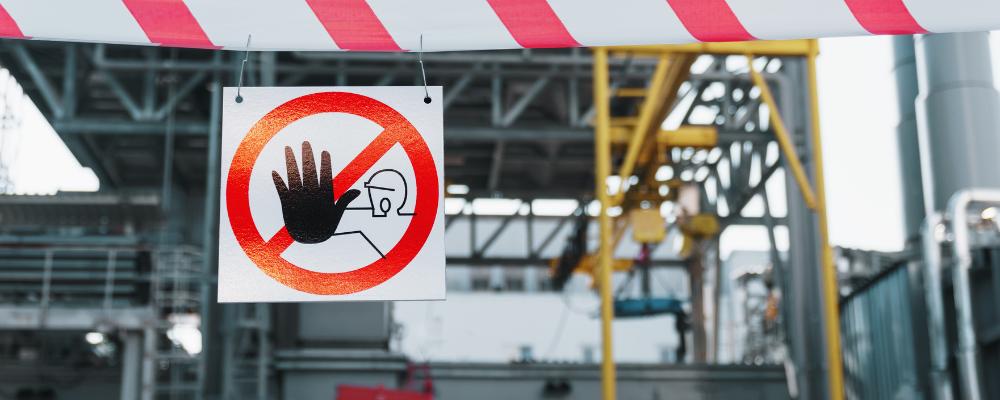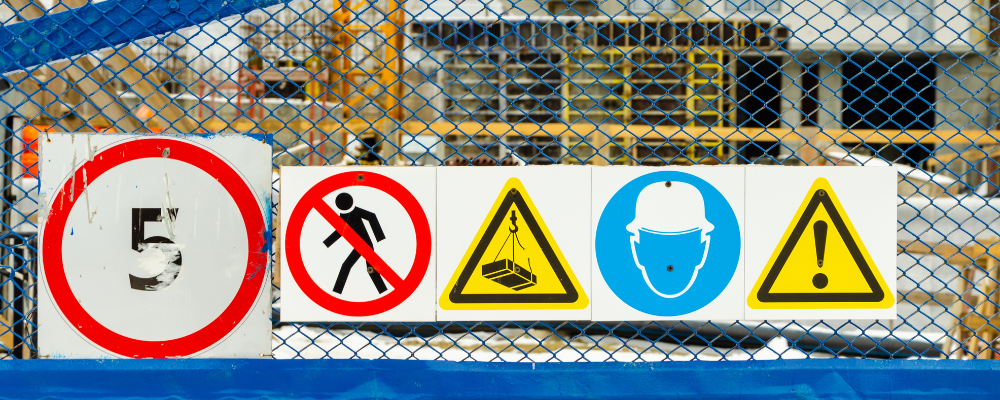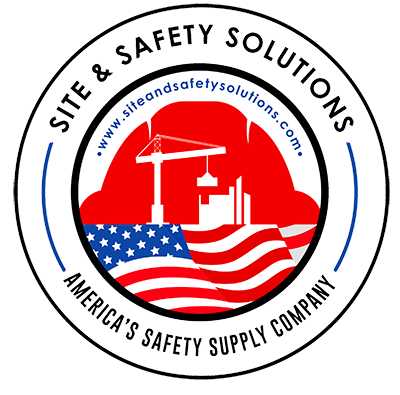
Introduction
In this digital era, where safety is paramount in the construction industry, the significance of health signs cannot be overstated. These signs, such as ANSI Z535 Emergency First Aid and Danger High Voltage Signs, alongside specialized gear like the DAX JUNGLE CARBON FIBER FULL BRIM HARDHAT, are pivotal in safeguarding the well-being of construction workers.
Importance of Health Signs in Construction
-
Preventing Accidents:
In the dynamic and high-risk environment of construction sites, the role of health signs, particularly ANSI Z535 signs, is a pivotal preventive measure against accidents and injuries. These signs act as visual warnings, alerting workers to potential hazards thereby mitigating risks.
The ANSI Z535 signs, such as the “Emergency First Aid Sign” and “Danger High Voltage Sign,” serve as beacons of caution. Placed strategically in areas prone to specific dangers like electrical hazards or emergency response requirements, these signs communicate critical information instantly. For instance, the “Danger High Voltage Sign” warns workers about potentially lethal electrical currents, prompting them to exercise extreme caution and follow prescribed safety protocols.
-
Enhancing Awareness
Health signs, exemplified by the NMC™ “Not An Exit” and OSHA “Danger Construction Site Authorized Personnel Only” signs, are crucial in enhancing construction workers’ awareness of site-specific risks and protocols.
The “Not An Exit” sign prevents confusion and potentially hazardous situations by clearly marking areas that may appear as exits but are unsafe for passage. It helps workers identify proper egress routes, reducing the risk of accidents during emergencies.
Similarly, the “Construction Site Authorized Personnel Only” sign restricts access to designated areas, preventing unauthorized entry and potential hazards to non-trained personnel. By delineating safe zones and restricted areas, these signs contribute significantly to maintaining a secure and controlled workspace.
-
Regulatory Compliance
An integral aspect of health signs in construction is their adherence to regulatory standards, particularly those set by OSHA and ANSI. These signs are designed and implemented strictly with the prescribed criteria, ensuring legal compliance within the industry.
Following OSHA and ANSI standards ensures legal compliance and fosters a safer work environment. It signifies a commitment to meeting and often exceeding safety requirements, reducing the likelihood of accidents, injuries, and legal liabilities. Compliance with these standards reflects a dedication to the well-being of workers, highlighting the importance placed on their safety within the construction domain.
In conclusion, health signs in construction serve a multi-faceted purpose:
- Preventing accidents through visual warnings
- Enhancing awareness about risks and protocols
- Ensuring compliance with stringent regulatory standards
Their strategic placement and adherence to standards significantly contribute to fostering a safer work environment, mitigating risks, and prioritizing the well-being of construction workers.

Impact on Worker Health
-
Reducing Risks:
Health signs are the silent guardians of a construction site, serving as beacons of caution in environments teeming with potential hazards. Specifically designed signs, such as the ANSI Z535 Rigid Plastic “Danger High Voltage” or the “Emergency First Aid” sign, are pivotal in minimizing health risks.
-
High Voltage Hazard Mitigation:
The prominent display of “Danger High Voltage” signs in areas with electrical equipment or exposed wiring is a crucial warning to construction workers. Such signs help prevent electrocution incidents by highlighting these risks ensuring workers steer clear of potential danger zones.
-
Emergency Preparedness and Response:
The presence of “Emergency First Aid” signs strategically positioned across the site equips workers with critical information on the location of first aid kits and emergency response protocols. This swift access to essential resources can significantly reduce the severity of injuries and increase the chances of rapid intervention.
-
Restricted Area Awareness:
Signs like “Construction Site Authorized Personnel Only” delineate areas where only trained or authorized individuals should enter. This minimizes the risk of accidents involving unauthorized personnel and ensures that only those equipped with necessary training access potentially hazardous zones.
-
Promoting Well-being:
Beyond mere risk reduction, the comprehensive implementation of health signs contributes to the holistic well-being of construction workers.
-
Physical Safety Enhancement:
A safer work environment directly translates to reduced physical injuries and health issues. When workers are constantly aware of potential hazards through clear signage, they can take necessary precautions, thereby reducing the likelihood of accidents that could result in physical harm.
-
Mental Health and Confidence:
Knowing that safety measures are diligently enforced can alleviate stress and anxiety among workers. This assurance fosters a positive mindset, allowing them to focus better on their tasks without the looming fear of unexpected dangers.
-
Improved Morale and Productivity:
A workplace that prioritizes safety through visible signs instills a sense of value in its workers. Feeling cared for and protected, employees are more likely to exhibit higher morale and increased productivity, knowing their employer prioritizes their well-being.
Health signs are not merely symbols; they are guardians that contribute significantly to reducing risks associated with high voltage, emergencies, and restricted areas. By doing so, they bolster construction workers’ physical safety and mental well-being, creating an environment where safety isn’t just a priority but a standard practice.
Maximizing Construction Site Safety: The Role of ANSI Z535 Rigid Plastic Signs
In construction safety, the ANSI Z535 Rigid Plastic Signs stand as stalwarts, guiding and safeguarding workers amidst potential hazards. This segment focuses on unraveling the critical significance of these signs in fortifying construction site safety for workers.
Understanding ANSI Z535 Standards
- Comprehensive Signage Norms: Detail the robustness of ANSI Z535 standards in delineating the design, colors, and formats crucial for effective safety signage.
- Legislative Compliance: Emphasize adhering to these standards to ensure legal compliance and optimal safety communication.
Role in Hazard Mitigation
- Risk Identification: Elaborate on how these signs aid in identifying and mitigating various risks prevalent in construction sites, such as high voltage, emergency protocols, and restricted areas.
- Visual Communication: Highlight the role of clear and standardized signage in effectively communicating potential hazards, thereby reducing accidents and injuries.
Enhancing Worker Awareness
- Promoting Vigilance: Discuss how ANSI Z535 Rigid Plastic Signs act as constant reminders, fostering a culture of vigilance among construction workers.
- Education and Training: Stress the importance of educating workers about these signs and their meanings during training sessions for heightened safety awareness.
Customization and Application
- Tailored Signage Solutions: Explain the versatility of these signs, allowing customization to suit specific construction site requirements.
- Strategic Placement: Discuss the significance of placing these signs strategically to maximize their visibility and impact on workers’ safety.
Integrating Technology and Innovation
- Digital Signage Advancements: Touch upon integrating technology, such as digital displays or augmented reality, to complement traditional signage for enhanced safety communication.
- Innovative Signage Solutions: Explore how advancements in materials and design techniques contribute to more durable and practical signage solutions.
Utilizing Specialized Safety Gear
- DAX JUNGLE CARBON FIBER FULL BRIM HARDHAT: Highlight the significance of specialized gear and health signs for holistic safety measures.
- Product Spotlight: Provide insights into how specific products like ANSI Z535 Rigid Plastic Signs and NMC™ Signage contribute to a safer workspace.
For more information, visit our website and Facebook page.
And for more products,
Brady® No Smoking Aluminum Sign
NMC™ “Caution Do Not Operate…” Labels
NMC™ Notice Wash Hands Before Work Sign, Bilingual
Conclusion
In the dynamic construction world, where hazards lurk around every corner, health signs emerge as the unsung heroes, serving as beacons of safety. From the ANSI Z535 Rigid Plastic “Emergency First Aid” Sign to the NMC™ OSHA “Danger Construction Site Authorized Personnel Only” Sign, these visual cues stand as sentinels, guarding against potential dangers and guiding workers toward a safer work environment.
The construction industry’s landscape constantly evolves, demanding a meticulous adherence to safety standards. Health signs, meticulously crafted to comply with stringent regulations like those set by OSHA and ANSI, form the backbone of a secure workplace. They speak a universal language, transcending barriers and conveying critical messages about high voltage, emergency procedures, restricted zones, and more.
Yet, health signs aren’t solitary saviors. Their efficacy is magnified with specialized safety gear like the DAX JUNGLE CARBON FIBER FULL BRIM HARDHAT. This synergy creates a comprehensive safety net, shielding workers from potential risks and empowering them to execute their tasks confidently.
As we navigate the realm of construction, it’s imperative to underscore the indispensable nature of these health signs. They aren’t mere symbols; they are lifelines. They represent a commitment—to oneself, fellow workers, and the industry—to prioritize safety.
Therefore, let’s champion a culture where health signs and specialized safety gear are not just accessories but integral components of the construction landscape. Let’s empower workers with knowledge, equip them with the right tools, and cultivate an environment where safety isn’t an option but an absolute necessity.
In conclusion, the power of health signs in the construction industry cannot be overstated. Embracing them isn’t merely a choice; it’s a responsibility—a commitment to ensuring every worker returns home safely. Together, let’s build structures and a culture of unwavering safety and well-being in construction.










